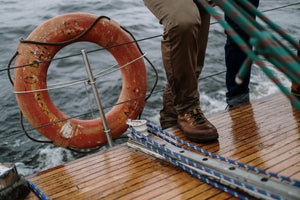
Trickle Up Design - the latest innovation in innovation.
Read the rest in the latest Seahorse Magazine: https://www.seahorsemagazine.com/current-issue/134-content/august-2018/646-trickle-upThe Harken process of developing new products usually follows a similar path: identify a market need, design, refine and engineer a product that fills it in a way no other does, then manufacture, package and launch. If the need stays big enough and the product performs well enough, you’re onto a winner. Now Harken are experimenting with a ‘skunkworks’ approach that fast-tracks niche products to help the world’s best sailors perform even better.
Literally and figuratively, grand prix and Olympic sailing classes move fast. And that has revealed development opportunities. So Harken have adopted a ‘quasicustom’ approach, to accelerate their product design and take those opportunities. The result is a growing suite of seriously niche products that execute on their design objectives well but are also specialised. Few sailors will need them but they will make a big difference to those who do.
The three most recent are the Harken Grand Prix (GP) mainsheet system for high-performance catamarans like the newly foiling Nacra 17 and F18s, the Harken Fly 29mm high-strength blocks, and an adaptation of the Ratchamatic block.
‘Design solutions often rise directly out of the feedback we receive from sailors who are competing at high levels and looking for that extra edge,’ says Harken design engineer and small boat product manager Matt Schmidt. ‘The conversation begins with a simple question: “What do you need to sail the boat faster?”’
One of the sailors looking for answers was two-time Moth World Champion, US Olympic Nacra 17 sailor and engineering graduate Bora Gulari. ‘I was trying to help my Nacra crew deal with mainsheet loads in the most efficient way possible,’ says Gulari. ‘As with a skiff they don’t get much of a break and the mainsheet load is typically higher on a catamaran, so my first response was “Let’s try to improve the mainsheet system.”’



